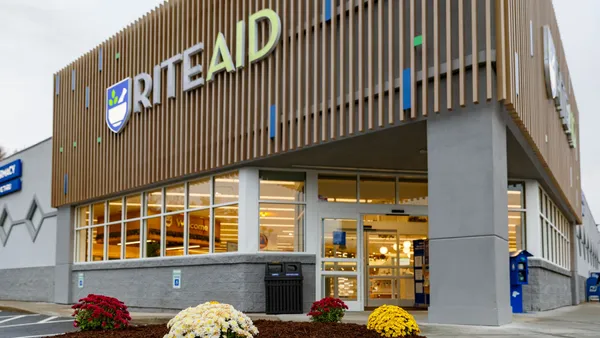Dive Brief:
- As COVID-19 and brand issues continue to drag on Ralph Lauren's sales, the luxury apparel seller is cutting costs, including by shrinking its corporate office space and closing stores.
- As the company adjusts to a new world, it is looking to shutter 30% of its North American corporate office footprint. That would save on rent costs but is also a way to "embrace new ways of working" and to "pivot resources to our key strategic priorities," CFO and COO Jane Nielsen told analysts last week, according to a Seeking Alpha transcript.
- The company is also looking to close up to 10 retail locations globally. Those and other cost-saving measures are expected to save the company $200 million to $240 million, according to a press release. The announcement follows an 18.2% top-line sales decline during the period that included the holidays.
Dive Insight:
Dragging down Ralph Lauren's sales were declines in both wholesale and retail sales. In North America, comparable sales at Ralph Lauren's brick-and-mortar stores were down 30%. A 9% spike in digital sales helped offset some, but not all, of that decline, with total sales in North America down 21.4% to $715.4 million. Globally, digital sales were up 20%.
Sales were down at fellow luxury players as well, but not at the levels seen at Ralph Lauren. During the same period, Tapestry — owner of the Coach, Kate Spade and Stuart Weitzman brands — saw total sales fell by 7%, and its digital sales rose by triple digits. At Capri Holdings, which owns Versace, Jimmy Choo and Michael Kors, sales were down 17.1%, while e-commerce sales rose by 65%.
Ralph Lauren CEO Patrice Louvet told analysts that the company's own data show the brand has strengthened during the pandemic and has been growing the customer base for its digital site, including 38% growth in North America. That's part of an effort to boost margins and full-price sales throughout Ralph Lauren's business and has been helped along by marketing and social media campaigns.
But given explosive growth in digital sales in the luxury and other apparel sectors last year, Ralph Lauren's online sales growth looks much more modest. Neil Saunders, managing director of GlobalData, described Ralph Lauren's North American digital sales as a "lamentable rate of growth relative to the market and underscores the fact that Ralph Lauren is losing share online."
In emailed comments, he said of the brand more broadly that it "doesn't have anywhere near the momentum of rival brands and several areas of the business remain stubbornly down."
The effort Ralph Lauren has put into its marketing efforts versus the results to date is problematic. "The online numbers are particularly disappointing given that one of Ralph Lauren's strategic priorities is to elevate the brand with digitally-savvy younger consumers," Saunders said. He noted that there is "some evidence" marketing and social media efforts are winning younger shoppers, but "we believe that the jury is still out on this initiative," Saunders added.
While its sales continued their struggle, Ralph Lauren has succeeded in cutting costs. Operating expenses were down more than 12% at $760 million. Sales declined faster, however, and operating income was down 24.1% during the period.
With its latest round of cost cuts, Ralph Lauren said "a portion" will be reinvested back in the business. That could help the brand as it continues working to adapt and attract new, high-spending customers.
"Having already worked to optimize its brand portfolio and create a leaner cost structure, we believe [Ralph Lauren] is taking the necessary steps to better position itself for the post-pandemic environment," analysts with Telsey Advisory Group led by Dana Telsey said in an emailed research note.















